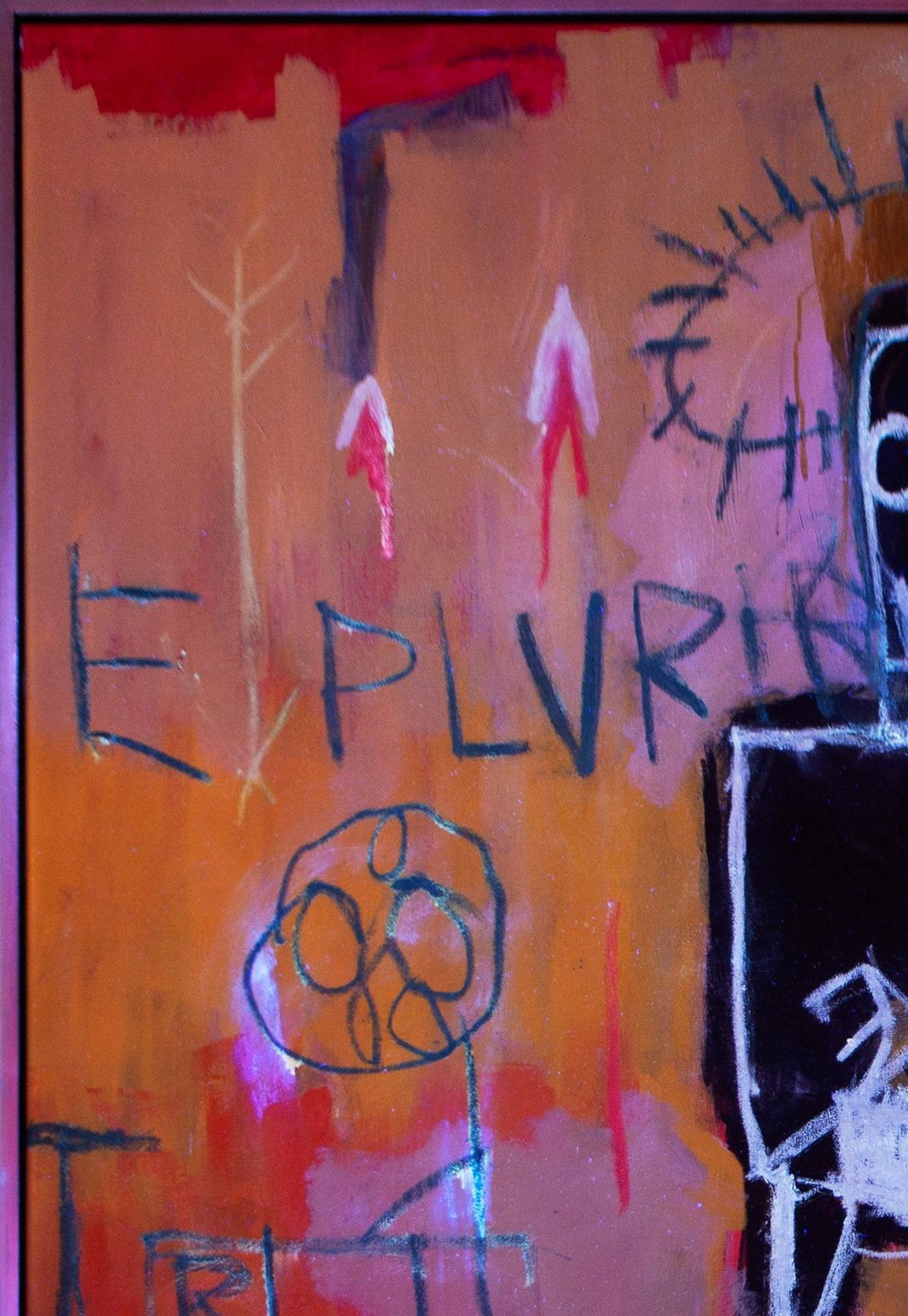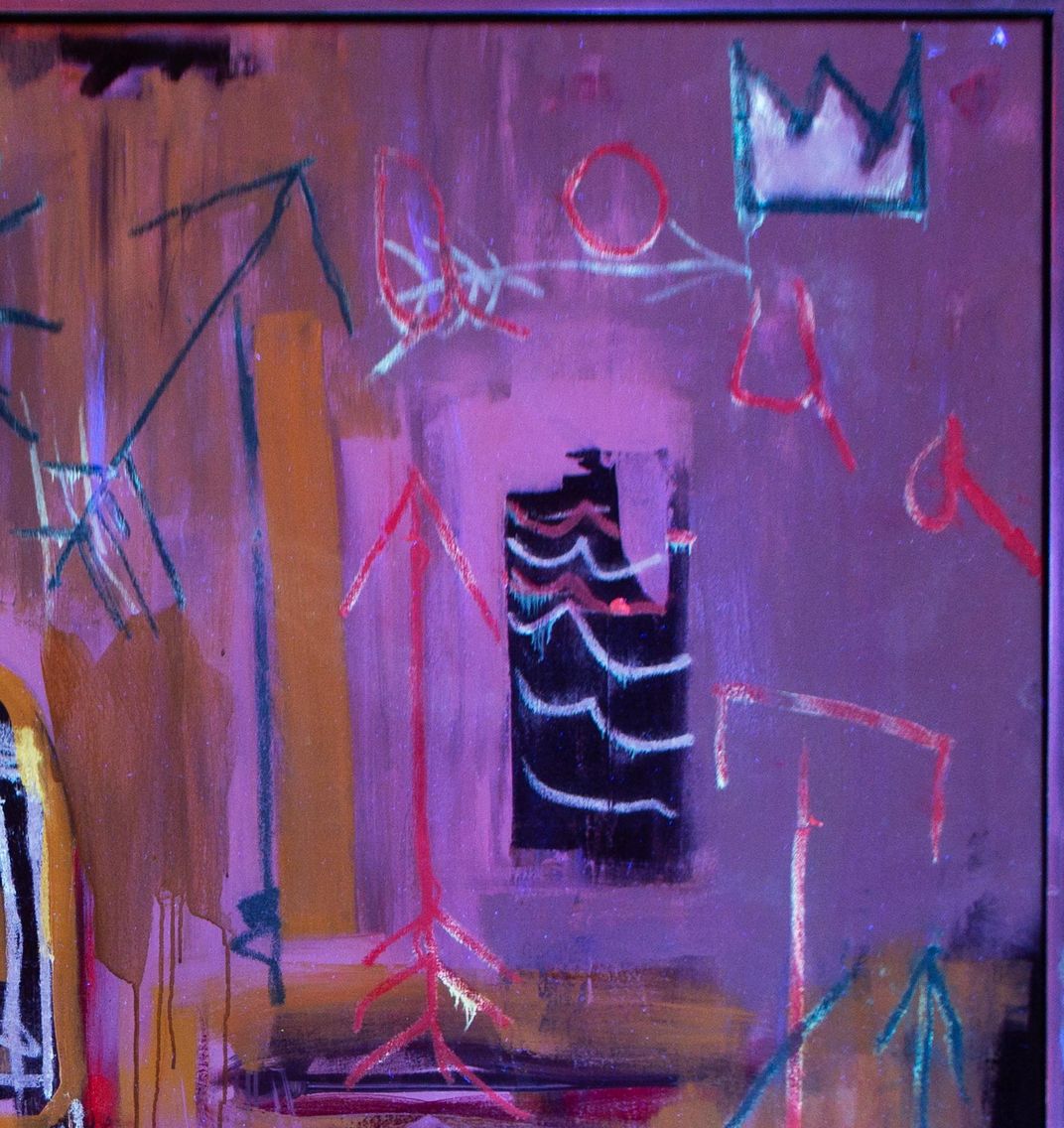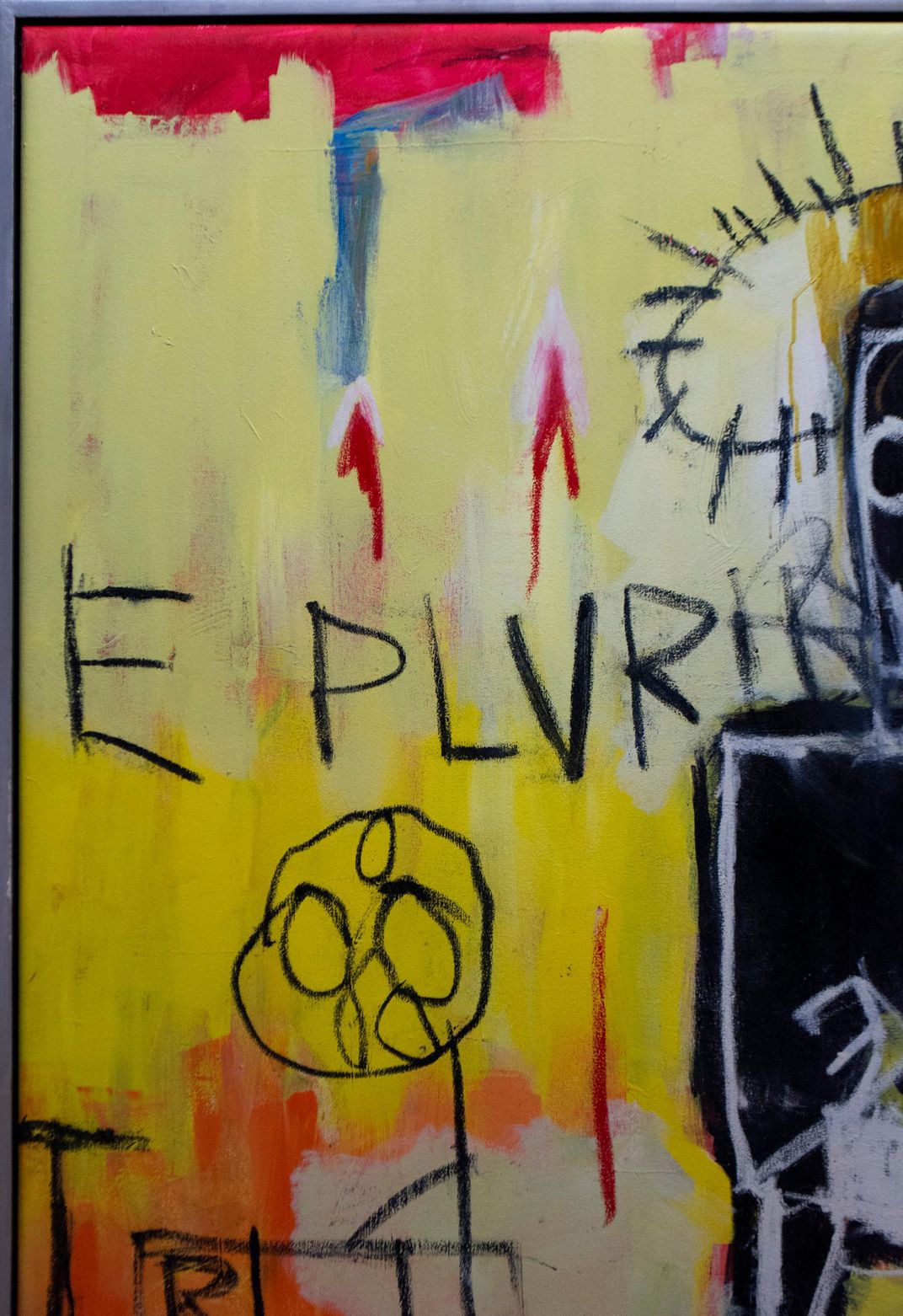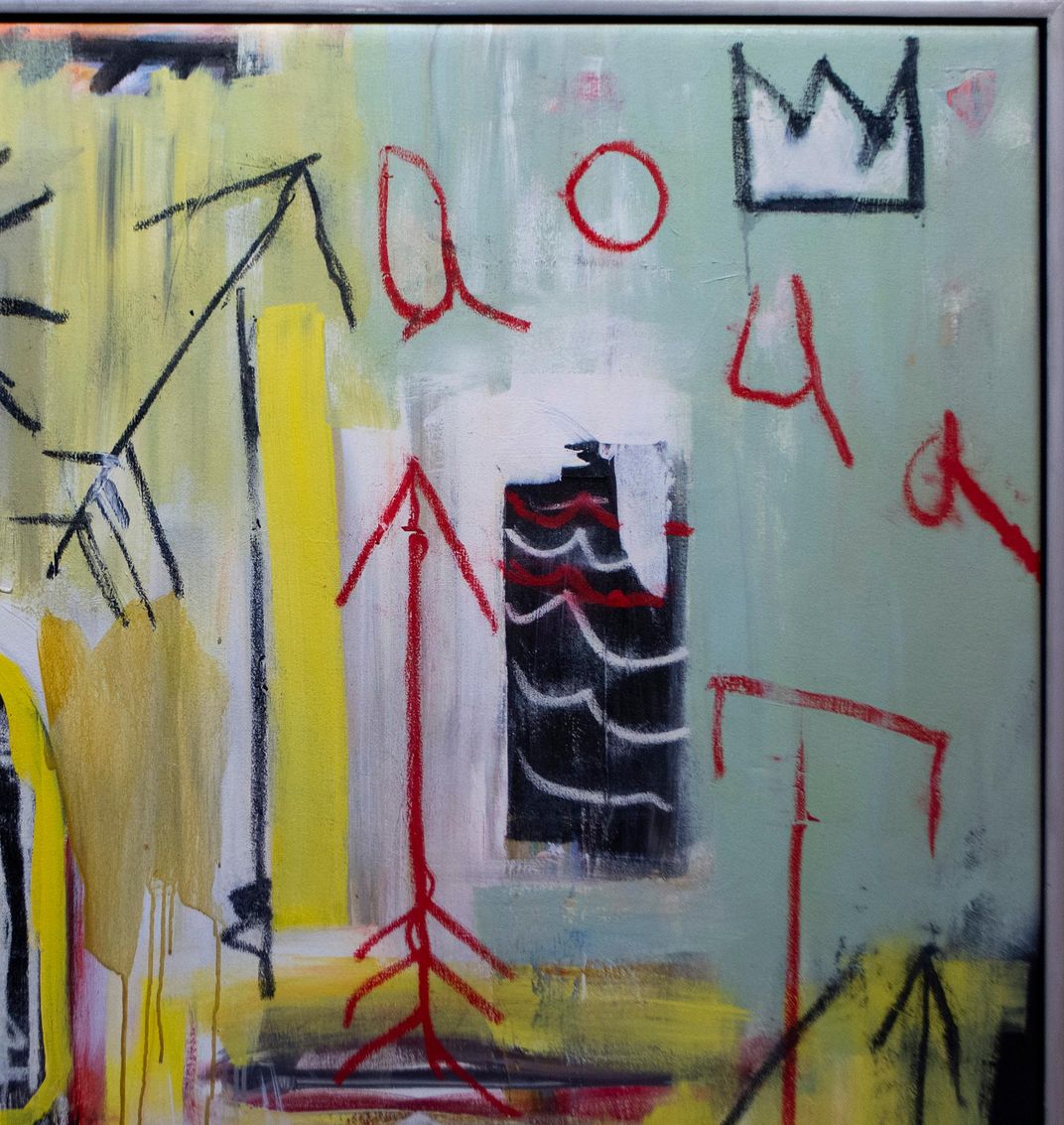Basquiat Painting Has Hidden Black-Light Images
An art conservator found the arrows on an untitled 1981 work and believes there may be more “secret” imagery hidden away on other works
A Jean-Michel Basquiat work can feel like it says something new with each viewing. But art conservator Emily MacDonald-Korth found something truly secret while examining a painting by Basquiat: arrows. As it turns out, there are projectiles that pierce the 1981 untitled work that can only be seen using a black light, reports Rachel Corbett at artnet News.
The painting’s owner had called in MacDonald-Korth, a well-known conservator, to confirm that the artwork was, indeed, painted in 1981. During a routine inspection of the piece to check for repairs and varnish, MacDonald-Korth turned off the lights and passed a black light over the painting. “I start looking at this thing and I see these arrows,” she tells Corbett. “I’ve never seen anything like it. He basically did a totally secret part of this painting.”
The arrows, likely scrawled using a black-light crayon, are similar to other red and black arrows that appear in the painting in visible light. It’s not clear if the black-light arrows were intended to be part of the finished painting or not, but MacDonald-Korth suspects Basquiat snuck them in intentionally.
This isn’t the only time the neo-expressionist, who is regarded as one of the most influential artists of the 20th century, utilized black light in his work. Back in 2012, Jill Lawless at the Associated Press reported that experts at Sotheby’s were examining Orange Sports Figure (1982) when they discovered a signature and date on the canvas under ultraviolet light. Basquiat did not typically sign his works, instead tagging them with a crown or his graffiti nom de guerre, SAMO; that makes full signatures, visible or invisible, of the late artist rare.
It’s possible, even likely, that other Basquiat works include black-light images that have yet to be discovered. Taylor Hoskins at Vice reports that the artist was known for working on multiple images at once, so he likely used the technique on various works. It's fitting that he would be attracted to black-light images, seeing as his paintings are also known for being visual puzzles, incorporating paint over images and scratched out words.
"This is a very exciting moment in Basquiat research," MacDonald-Korth tells Smithsonian.com in an email. She especially suspects the 1981 work Poison Oasis of containing invisible images. As she explains in an interview with Corbett of artnet News, Poison Oasis was made the same year as the untitled work and visible arrows also appear in the painting.



